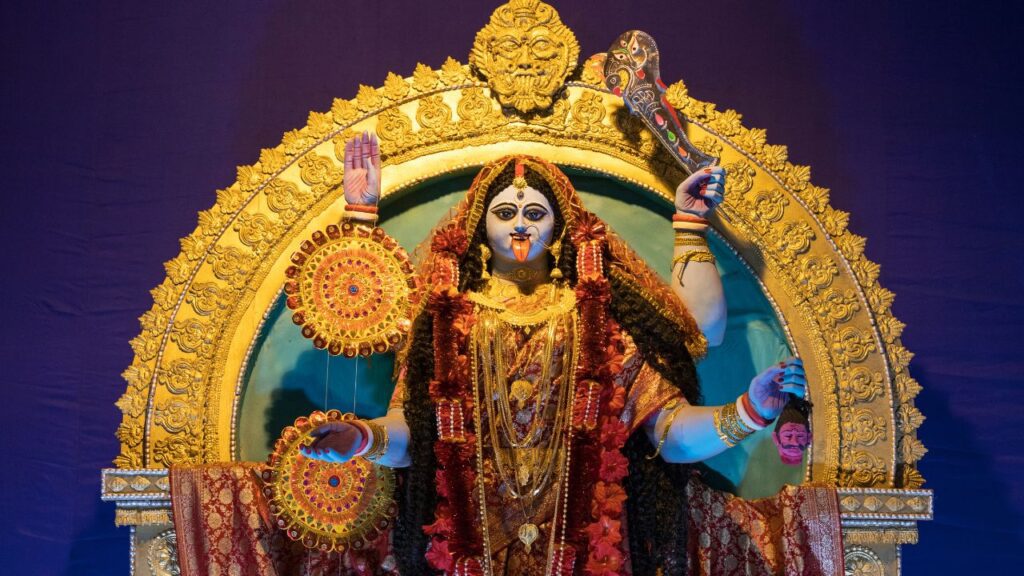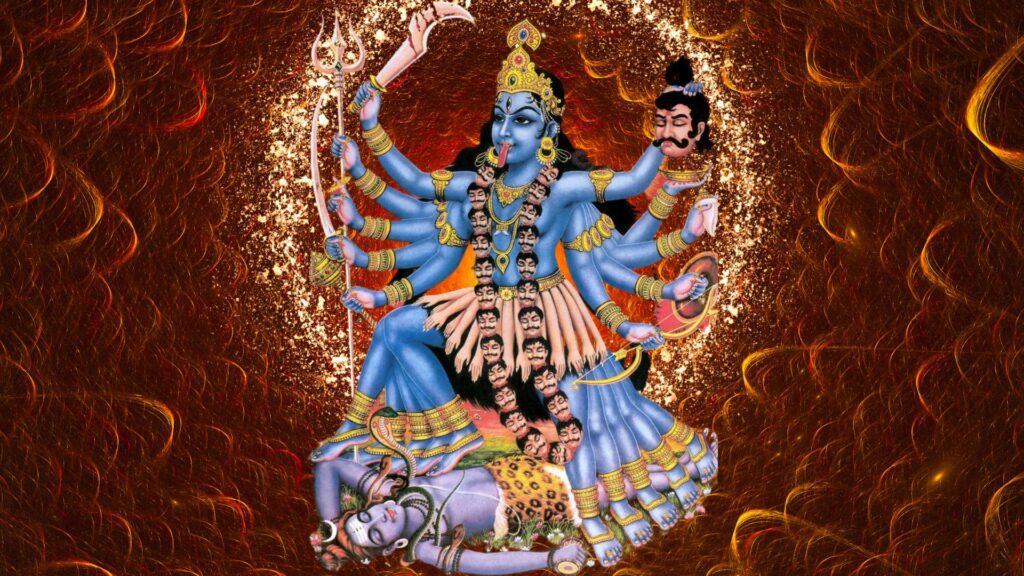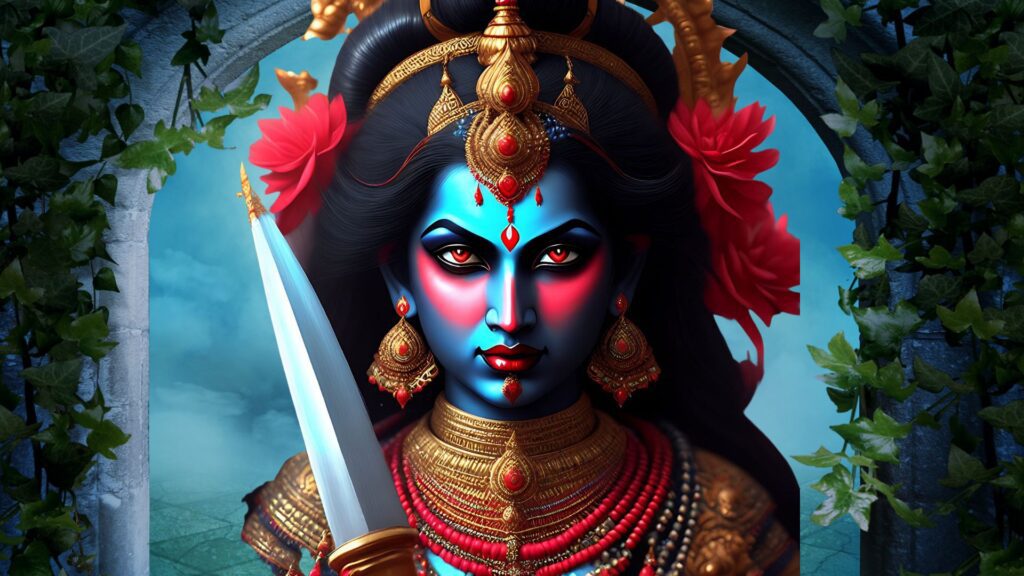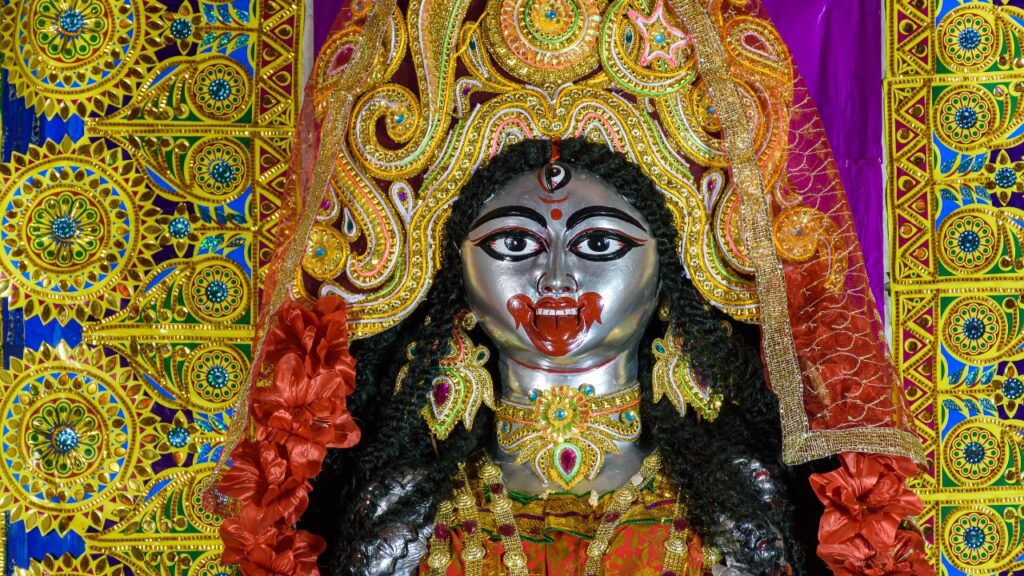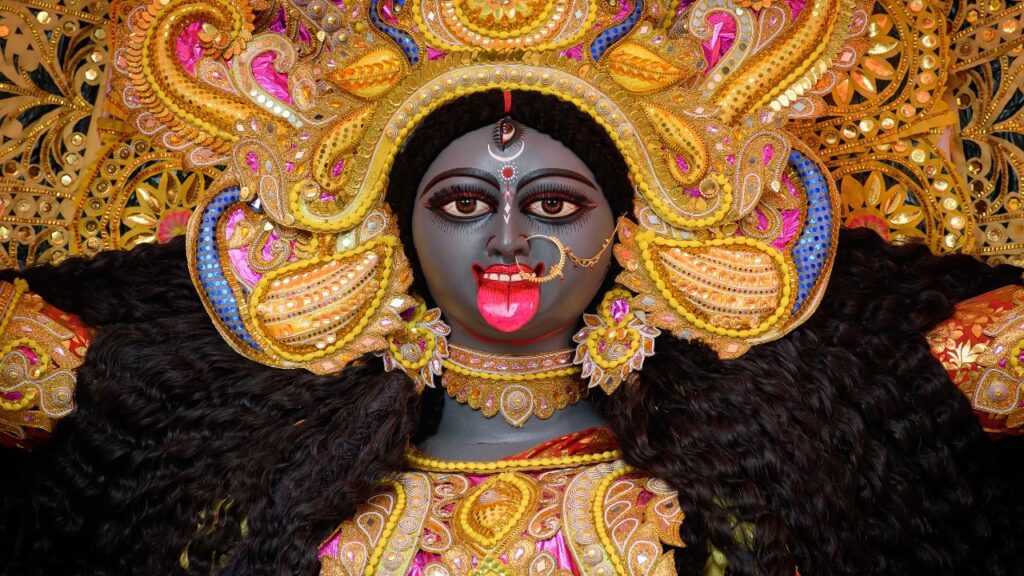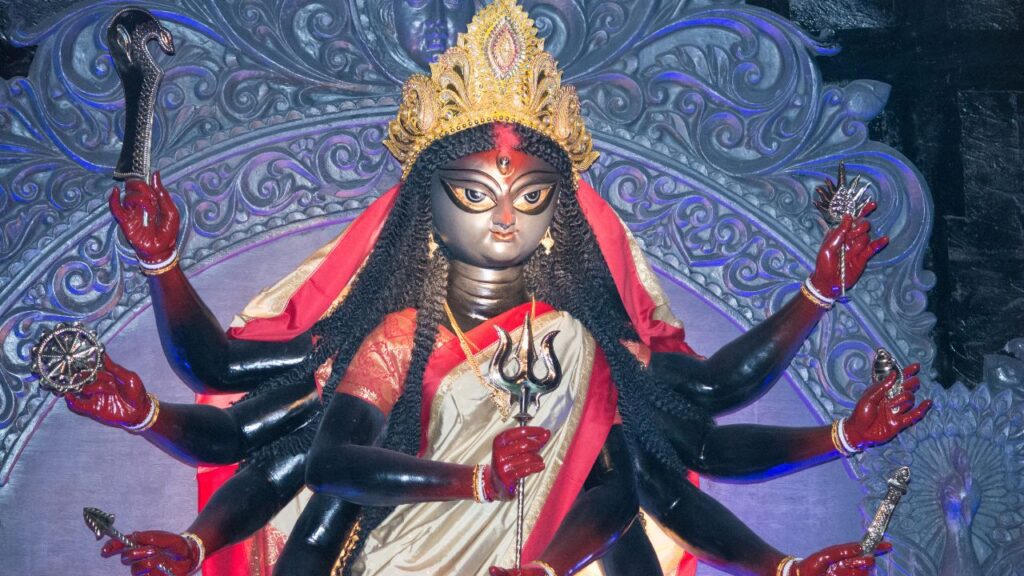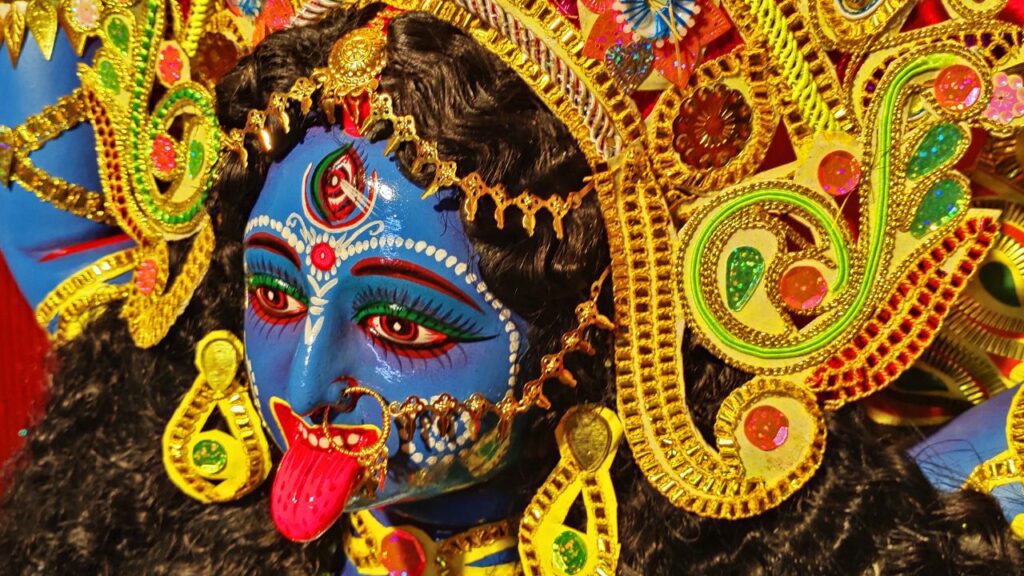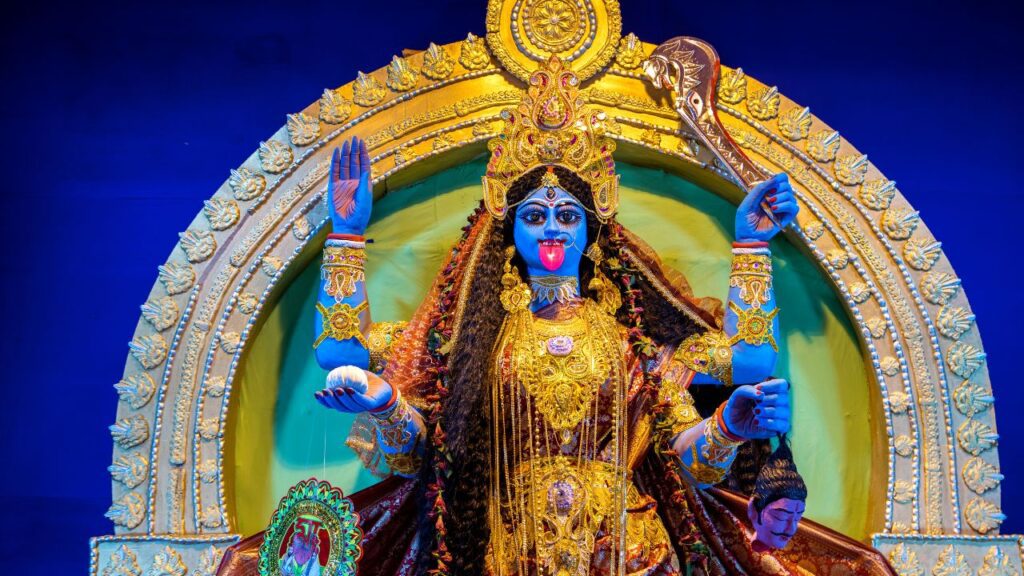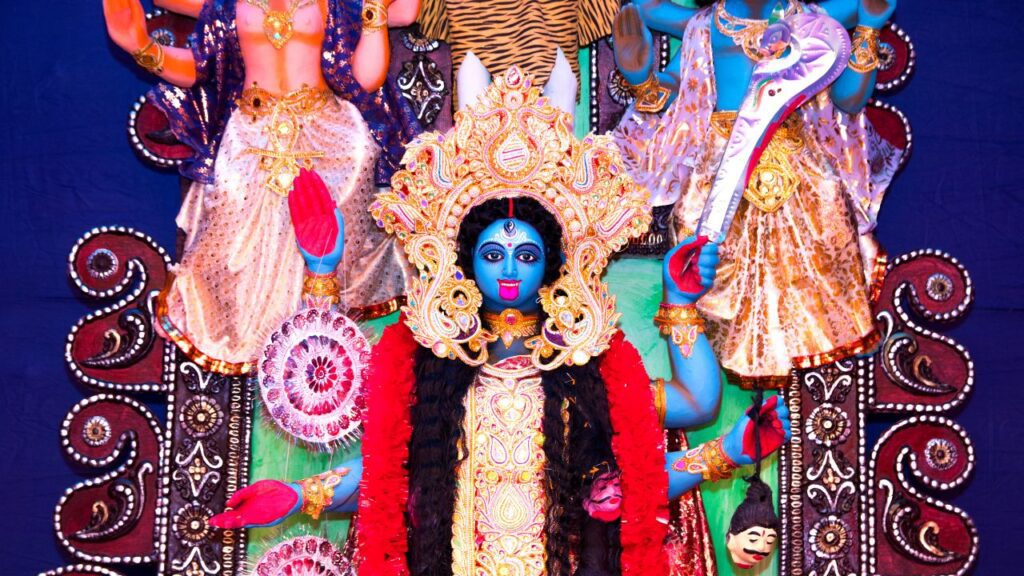Kali Trishul: Symbolism of Kaali’s Trident
Introduction
Deeply ingrained in Hindu mythology and theology, the trishula—or trident—is a symbol The Trishula has great symbolic meaning and reflects many deep spiritual ideas because the weapon of choice for the strong and forceful goddess Kaali. Beyond its utility as a powerful weapon, the Trishula has been filled with layers of symbolic significance and a means for devotees to interact with the divine energies of creation, preservation, and destruction.
The Triads of the Trishula
With three separate prongs, the Trishula is sometimes understood as a depiction of the basic triadic ideas guiding the Hindu cosmological theory. thought to represent the trinity of Brahma, Vishnu, and Shiva – the creator, preserver, and destroyer respectively – the three points are thought to reflect This trinity is essential for the cyclical character of life, in which creation is followed by preservation and finally destruction opens the path for a fresh cycle of manifestation.
The Gunas: Tamas, Sattva, Rajas
The three prongs of the Trishula are thus said to reflect the three Gunas, or basic traits of nature: Sattva (purity, harmony), Rajas (passion, dynamism), and Tamas (inertia, darkness). The building components of the material world, these Gunas interact constantly to produce the always shifting fabric of life. In this perspective, the Trishula represents visually the dynamic balance and interaction among these three fundamental traits.
The Triads of Goddesses
The three main goddesses of the Hindu pantheon— Saraswati, Lakshmi, and Parvati (or Durga)—are also connected with the Trishula. Relatively, these goddesses stand for the creative, sustaining, and destructive sides of the divine feminine. In this context, the Trishula represents the wholeness and interconnection of these three separate but complimentary expressions of the divine feminine.
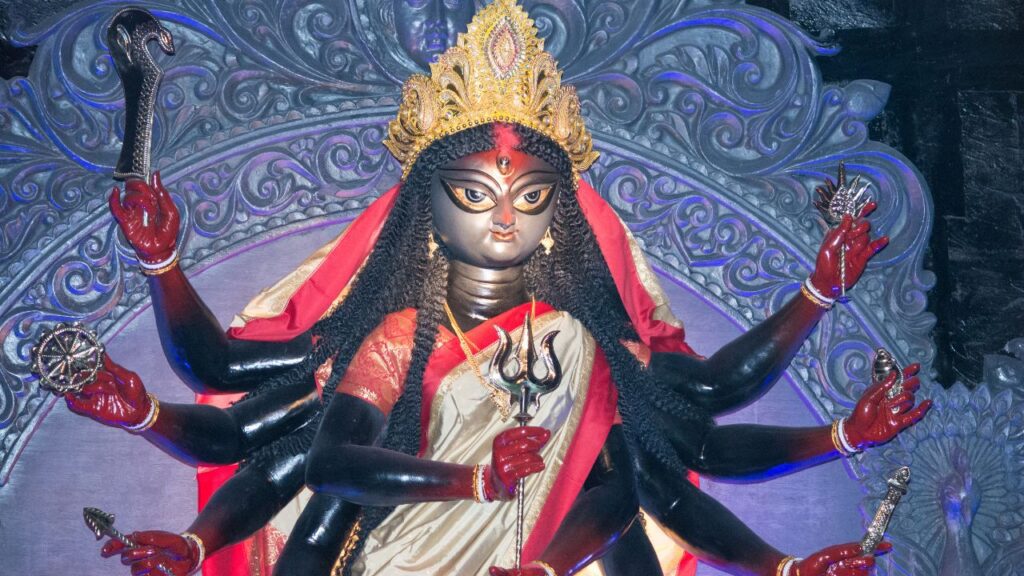
Shiva’s Shakiths
Iccha Shakti (the power of will), Jnana Shakti (the power of knowledge), and Kriya Shakti (the power of action) are the three Shakrites, or powers, of the Hindu god Shiva that the Trishula is likewise intimately associated with. Shiva’s function as the supreme transformer and the lord of destruction and regeneration is thought to be derived from these three Shakrites. Considered as Shiva’s sword, the Trishula physically reflects these three fundamental Shakrites.
The Trishula and Life’s Cycle
Additionally understood as the three phases of the cycle of life—birth, life, and death—are the three prongs of the Trishula. A basic principle of Hindu philosophy, this cyclical view of life holds that death is not considered as an end but rather as a necessary change to a new phase of life. In this context, the Trishula represents the ongoing process of transformation and regeneration that is death, life, and rebirth.
Trishula and Tantric Approaches
Within the Tantric traditions, the Trishula is rather important. Often used as a metaphor of the harmony between the masculine and feminine ideas, it shows how Shiva (the masculine) and Shakti (the feminine) forces are combined. Essential for the reach of spiritual enlightenment and the mastery of Tantric practices, the Trishula is said to be a powerful weapon for calling and directing these divine energies.
The Trishula and Kundalini awakening
According to the Tantric tradition, the Trishula is also intimately connected with the awakening of the Kundalini energy, the latent spiritual power existing at the base of the spine. Said to be the three primary energy channels (Nadis), Ida, Pingala, and Sushumna, the three prongs of the Trishula are supposed to be the routes for the Kundalini’s ascent through the chakras, therefore producing the final experience of spiritual enlightenment.
Hindu Image of Trishula
Common in Hindu symbolism, the Trishula is seen in the hands of several gods and stands for their heavenly powers. The way the goddess Kaali is shown as commonly wielding the Trishula as a symbol of her terrible and destructive force is maybe the most obvious example. Kaali’s Trishula, in her hands, is evidence of her position as the ultimate destroyer of evil and the personification of the transforming force of the divine feminine.
Trishula in Temple Construction
Hindu temple architecture also has the Trishula as a frequent motif, usually found decorating the spires and rooftops of holy buildings. This arrangement of the Trishula is supposed to infuse the temple with a strong protective energy, therefore countering bad energies and calling for the heavenly blessings.
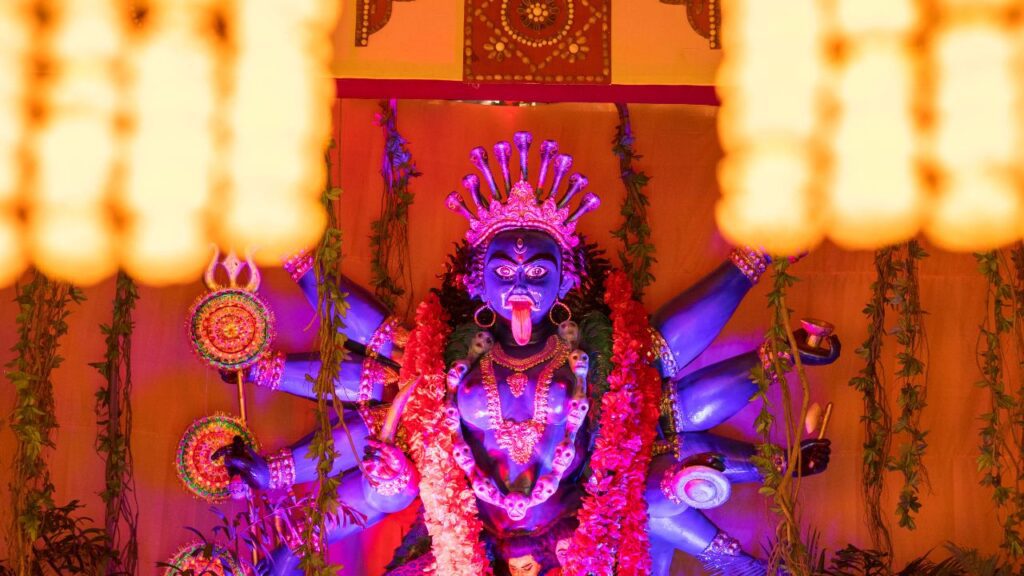
The Trishula in Ritual and Ceremonial Practices
Many Hindu rites and ceremonies involve the Trishula in a major part. Often utilized as a ceremonial tool, it is whereby devotees give prayers and offerings to the gods while either carrying or circumambulating the Trishula. Purification ceremonies also occasionally incorporate the Trishula, whose three prongs are supposed to symbolize the cleansing of the physical, mental, and spiritual domains.
The Trishula in Hindu celebrations
The Trishula is usually quite visible in the festivities of significant Hindu holidays. For instance, the Trishula is cherished as a sign of Kaali’s power and included into the Navaratri celebration, which honors the divine feminine, by means of several rites and decorations.
The Trishula in Spiritual Activities
Apart from its symbolic and ceremonial relevance, the Trishula is very important in Hindu spiritual life. Using the Trishula as a tool for meditation, devotees could visualize the three prongs as symbolizing the several triadic ideas covered herein. In Tantric visualization activities, the Trishula is also occasionally employed since it is considered as a portal for the divine forces.
Trishula and asceticism
The Trishula is also connected in Hindu culture with the ascetic and renunciant way of life. Often portrayed as the sword or tool of Shiva, the ultimate ascetic and the personification of detachment from worldly needs, the Trishula is In this framework, the Trishula represents the ascetic’s dedication to the search of spiritual emancipation and rejection of the three-fold character of material life.
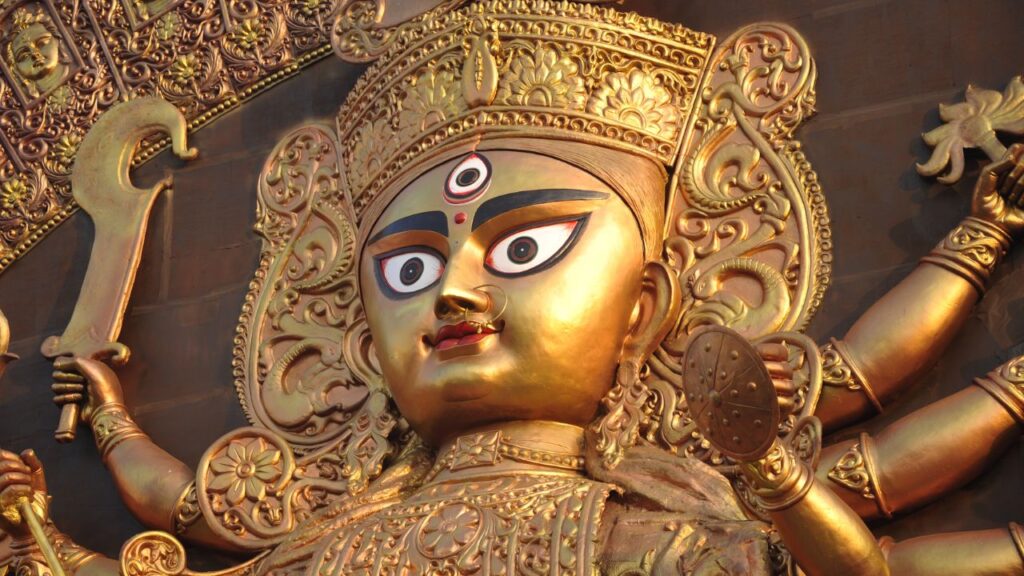
The Trishula in Cross-Cultural Contexts
Rising above Hinduism, the Trishula—a sign of power and heavenly energy—has found its way into the religious and cultural traditions of many other countries. For example, the Trishula is frequently connected throughout Southeast Asia with the Hindu-Buddhist deity Shiva and is very visible in temple and holy site construction and symbolism.
The Tibetan Buddhist Tradition’s Trishula
Within the Tibetan Buddhist tradition, the Trishula—which is intimately connected to the wrathful deity Dorje Phurba—is known as the Trisula. In this sense, the Trisula is thought to be a great instrument for the elimination of challenges, the cleansing of bad energy, and the reach of spiritual enlightenment.
Conclusion
In the Hindu religion, the Trishula—the revered emblem of the goddess Kaali—is a multifarious and very important symbol. From the basic triadic character of the cosmos to the dynamic interaction of the divine feminine forces, its three prongs reflect a great variety of spiritual ideas. Beyond Hinduism, the Trishula’s symbolic force finds resonance in the religious and cultural traditions of many nations, therefore proving its international appeal as a symbol of divine power, transformation, and the search of spiritual enlightenment.
#kali #trishul #maakali #kalimaatrishul
